Ready for an adventure? Let’s dive into Gwangju, South Korea’s sixth-largest city, tucked away in the southwestern corner of the peninsula. This place is a vibrant blend of rich history, passionate culture, and bustling urban life. Gwangju is not just a city. It’s a city with stories of artistic rebellion, a spirited fight for democracy, and a warm, welcoming community. Whether you’re an art aficionado, a history buff, or a foodie at heart, Gwangju has something special in store for you. Let’s unpack what makes Gwangju a must-visit for anyone looking to explore the depth and diversity of South Korea.
source: Nomadic Samuel and That Backpacker from Samuel and Audrey YT Channel
Audrey and I had a chance to visit Gwangju on a long-weekend while teaching English in South Korea. We hopped on a train from Pyeongtaek and used Gwangju as a base to explore nearby Boseong city and the Damyang Bamboo Forest. However, the city itself definitely deserves its own proper exploration.
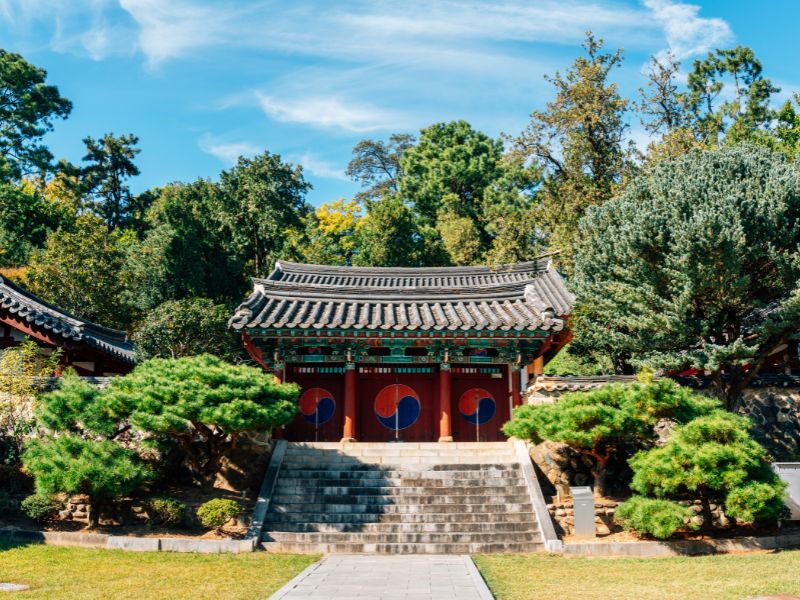
A Beacon of Art and Culture
Creative Souls Unite: Gwangju is famously known as the city of light, but it’s also a city of art. Home to the esteemed Gwangju Biennale, this city buzzes with creative energy, from cutting-edge galleries to vibrant street art that tells stories of hope and resilience.
A Storied Past
The Spirit of May: The May 18th National Cemetery and the Gwangju Uprising Memorial Hall stand as solemn reminders of the city’s fight for democracy in 1980. These historical sites offer a deep dive into a pivotal moment in South Korea’s modern history, honoring the spirit and sacrifices of the Gwangju citizens.
Culinary Delights
A Taste of Gwangju: Get ready to tantalize your taste buds with Gwangju’s unique culinary offerings. Known for its delicious and diverse street food, the city is particularly famous for its Korean-style pancakes (jeon) and the savory delight that is Gwangju kimchi. Don’t miss exploring the Yangdong Market for an authentic taste of local life.
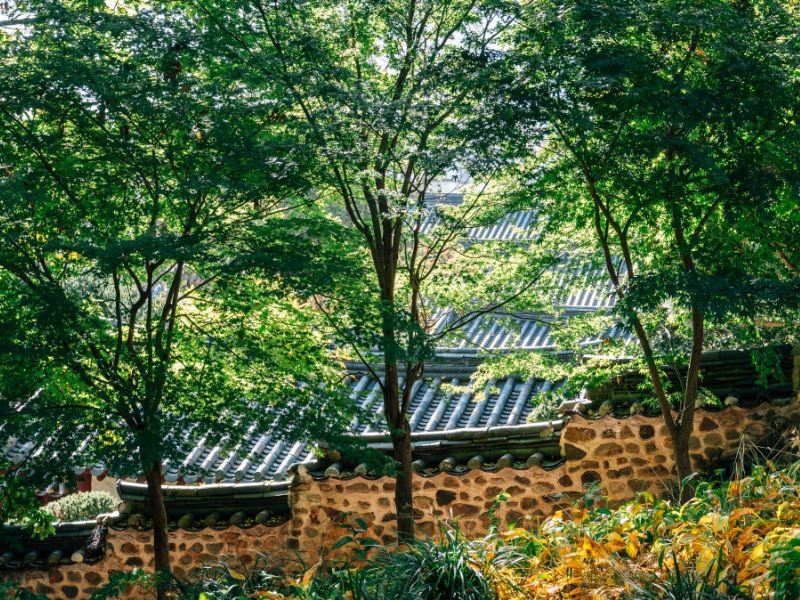
Green Escapes
Urban Oasis: Amidst its urban landscape, Gwangju boasts beautiful green spaces like the Mudeungsan National Park. Here, hiking enthusiasts can explore ancient temples nestled in the mountains, serene walking trails, and breathtaking vistas that showcase the natural beauty surrounding the city.
Gwangju Nightlife
When the Sun Goes Down: The city comes alive at night with its bustling markets, chic cafes, and lively bars and clubs. The neighborhood around Chonnam National University is a hotspot for those looking to experience the vibrant youth culture and energy of Gwangju after dark.
So, pack your bags (and maybe an appetite for adventure), and get ready to immerse yourself in the unique charm that is Gwangju.

Gwangju City Guide: A Brief History Of Gwangju, South Korea
Gwangju is a city with a story that resonates deeply within the soul of every Korean. It’s a narrative of art, struggle, and transformation that has propelled Gwangju from its historical roots into a bustling hub of culture and democracy. Let’s take a stroll down memory lane and uncover the layers of history that define Gwangju.
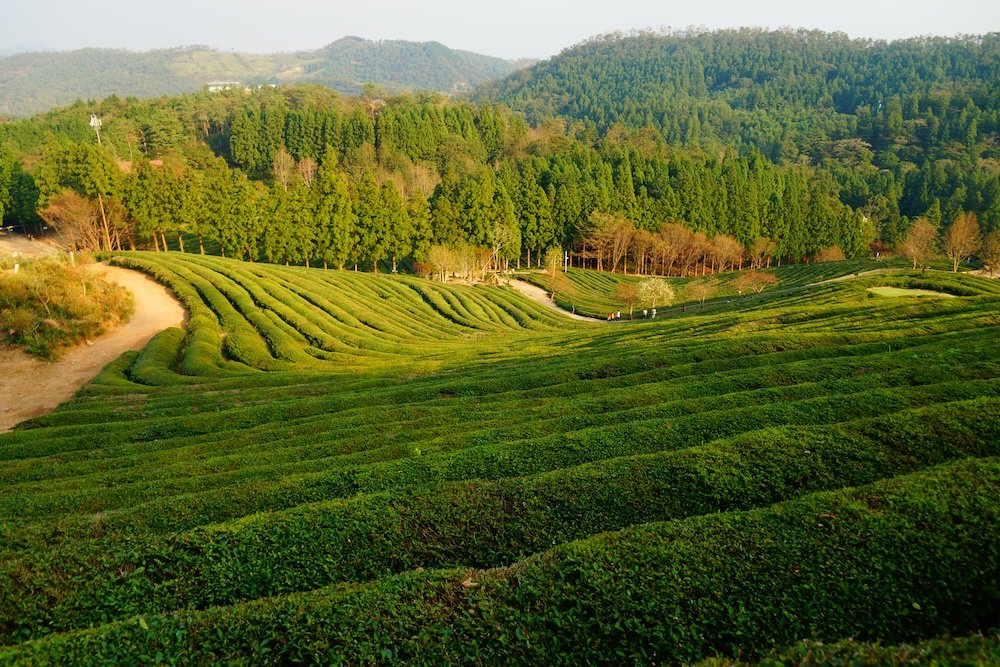
Ancient Beginnings and Royal Ambitions
Roots in the Goryeo and Joseon Dynasties: Gwangju’s journey begins in the mists of Korea’s ancient history, with its strategic importance coming to light during the Goryeo and Joseon dynasties. It was a place of scholars, artists, and royals, contributing significantly to the cultural and political landscape of historical Korea.
The Cradle of Democracy
The May 18 Democratic Uprising: The most pivotal chapter in Gwangju’s history unfolded in May 1980, when the city became the epicenter of a pro-democracy uprising. Citizens took to the streets in a brave stand against martial law, an event that would forever mark Gwangju as a symbol of resilience and the fight for democratic freedom in South Korea.
Cultural Renaissance
Artistic Awakening: In the wake of its tumultuous past, Gwangju emerged as a vibrant beacon of art and culture. The city’s streets, galleries, and festivals—like the Gwangju Biennale—reflect a commitment to freedom of expression and the healing power of art. Gwangju’s culture is a testament to its citizens’ strength and creativity.
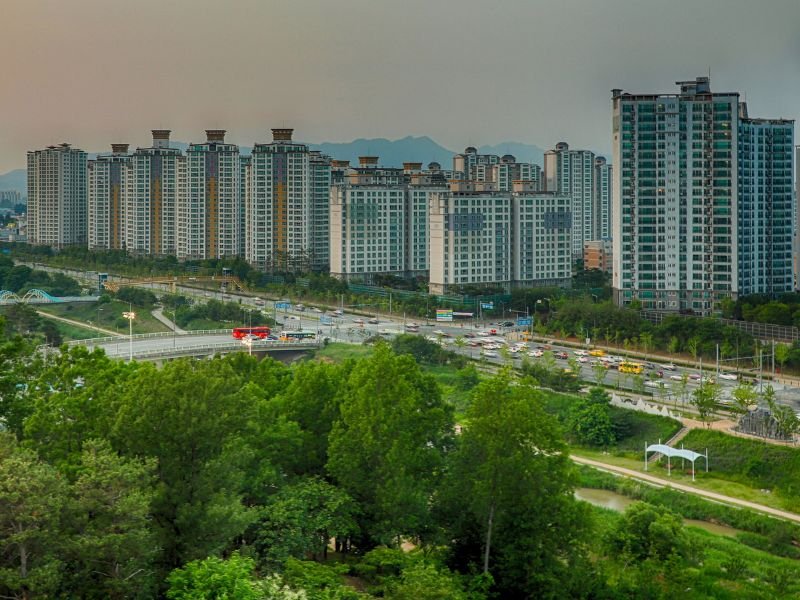
Gwangju Today: A City of Progress and Peace
From Ashes to Action: Today, Gwangju stands as a dynamic city that honors its past while boldly facing the future. It’s a place where history is remembered, not just in museums and memorials but in the spirit of its people—forward-thinking, resilient, and ever welcoming.
Gwangju’s Gastronomic Heritage
A Feast of Flavors: Beyond its historical and cultural significance, Gwangju is also known for its rich culinary traditions, from the famous Gwangju kimchi to the bustling food markets that offer a taste of the region’s bounty. The city’s food scene is a delicious reflection of its history—diverse, vibrant, and deeply rooted in the land.
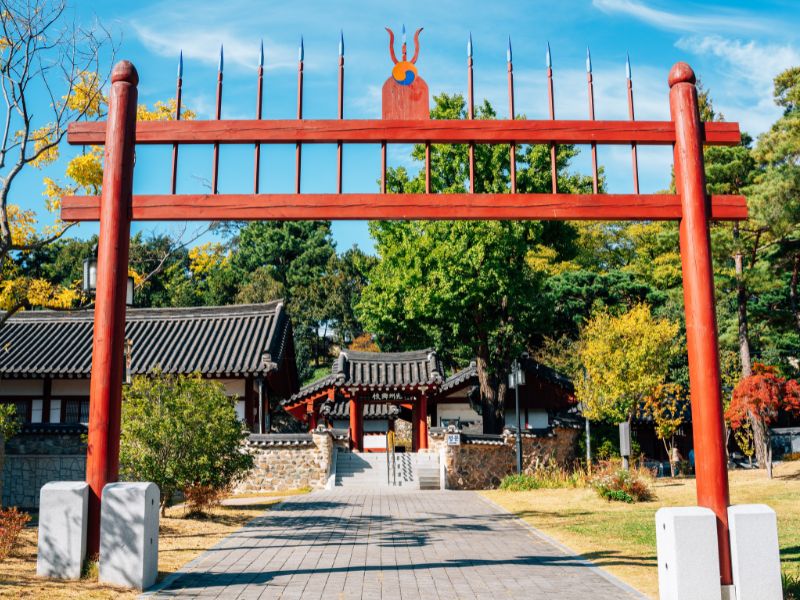
Gwangju Top Attractions and Best Places to Visit in South Korea
While South Korea is now one of the world’s leading democracies, it wasn’t always so free. Before its democratization, the country was under the control of authoritarian leader President Park Chung-hee for 18 years. After his assassination in 1979, the military seized power.
Pro-democracy activists began agitating for elections, a free press, and a minimum wage shortly after that. The opposition was most vigorous in South Jeolla province, whom Park Chung-hee neglected during his reign.
As demonstrations raged against the military junta in May 1980, the strongest happened in Gwangju. Students gathered at the gates of Chonnam National University in defiance of its closure. After a confrontation with soldiers, protests grew to 2,000 people later that day. Civilian protesters overcame the core of Gwangju – this led soldiers to escalate to lethal force.
A 29-year-old deaf man was the first victim, as soldiers beat him to death with clubs. The next day, soldiers bayoneted and opened fire on protesters. This provocation only made things worse – a local TV station was set ablaze, and militants raided armouries. Soon after, hastily-formed civilian militias managed to push the military out of the core.
A few days later, though, reinforcements arrived, which included helicopter gunships. It was a slaughter – while the official death toll was under 200, other estimates put it between 1,000-2,000 souls.
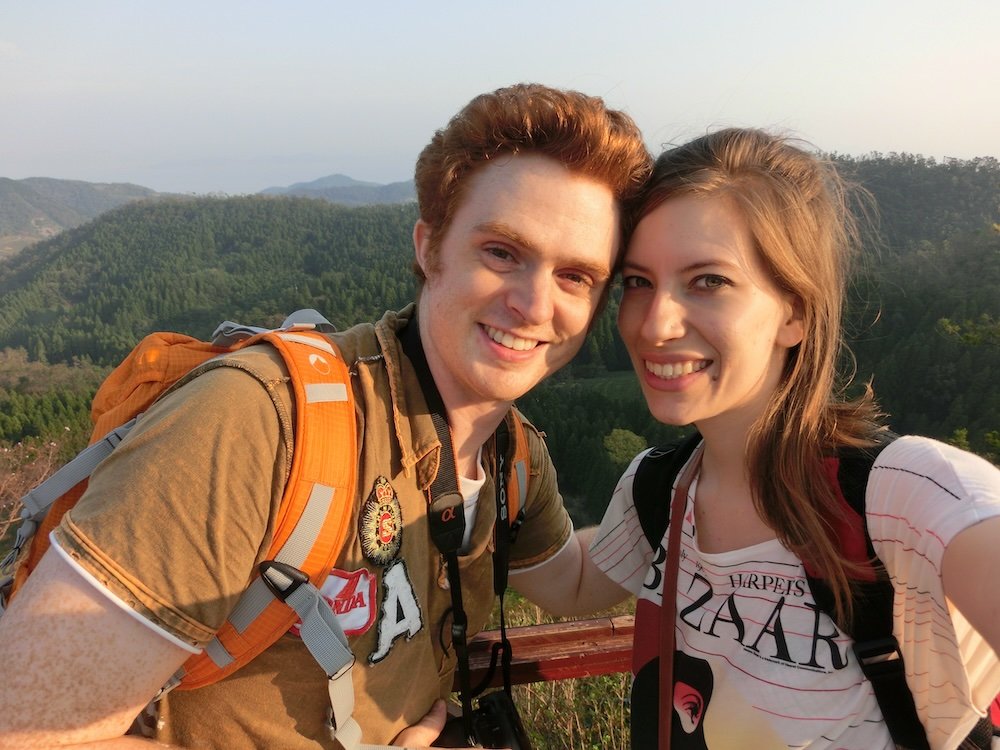
Important History
The remains of these freedom fighters were laid to rest within the May 18th National Cemetery. It consists of several highlights – the graves, the memorial hall, and the May 18th Memorial Monument. The graves are simply kept mounds with headstones, the memorial hall contains photos of many victims of the Gwangju Uprising, and the May 18th Memorial Monument consists of a pair of pillars that stand 130 feet tall. It is a sombre place, so dress respectfully and mind your behaviour – many victim’s relatives are still alive.
Those wanting to include a Buddhist hall of worship in their Gwangju sightseeing will want to check out Jeungsimsa Temple. Located on the slopes of Mount Mudeungsan, be sure to visit this peaceful place during the fall. The reds, oranges, and yellows of its surrounding foliage make for excellent photos during this season.
As for the temple itself, it is an active retreat for monks. As you admire its wood carvings, Buddha statues, and other highlights, make time for a chat.
Get a feel for how life once was by stopping by the Gwangju Folk Museum. Over two floors, this institution showcases things like food, clothing, handicrafts, and various customs from the past. Dioramas chronicle daily scenes from life centuries ago, while video presentations show off nine relics of South Jeolla’s culture.
While in Gwangju, learn more about Asian culture by visiting the Asia Culture Center. In this modern hall, you’ll find visual displays and video presentations on cultures spanning the entirety of Asia. However, try to take in a stage show, as they do a great job representing this continent’s diverse cultures.
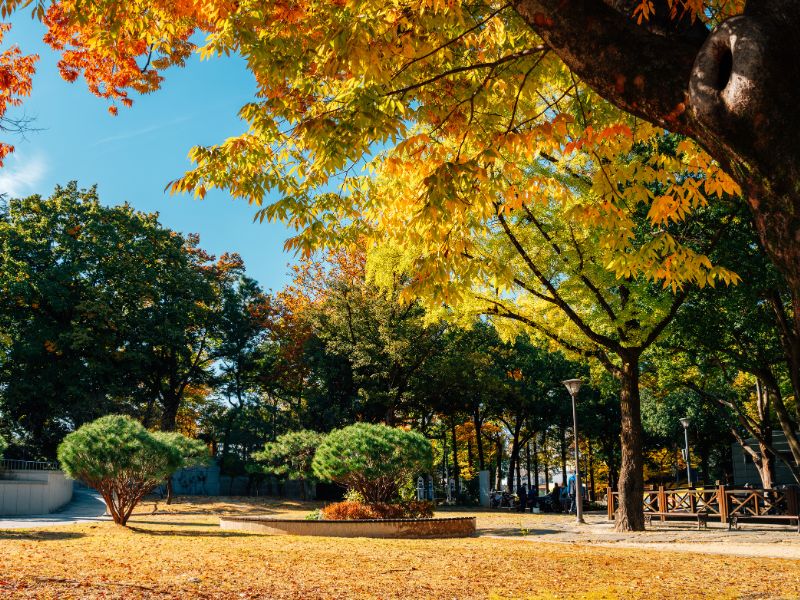
Other Cultural Attractions: Trip to Gwangju, Korea
Gwangju is a city defined by not just by culture and nature, but by tragedy as well. While it is home to temples and surrounded by beautiful mountains, its people bled for democracy in the 1980s. In 1980, thousands were said to have perished as the army quashed the rebellion.
Ultimately, this heavy-handed response spelt doom for the military government, as free elections followed just years later. If you want to understand how South Korea became a prosperous democracy, visiting Gwangju is a must.
Nature lovers will want to spend at least one day exploring Mudeungsan National Park. It protects Mount Mudeungsan, the peak from which it takes its name. Despite rising 1,100 metres above the surrounding landscape, it is a relatively easy mountain to climb. Try to scale it during the week, as everybody and their dog comes here from Gwangju on weekends.

More Attractions
Even so, those who choose not to scale this peak will still have plenty to do. The Gwangju National Museum is one such attraction, as it contains artifacts from surrounding provinces.
As South Korea developed over the past generation, older-style neighbourhoods have emptied. In Gwangju, authorities have redeveloped one of them into an attraction known as Yangnim-dong Penguin Village.

Everywhere you look its buildings have been decked out in a variety of penguin murals. With Instagram moments aplenty, you’ll be in heaven if you love snapping selfies.
Get a taste of local life by strolling through the stalls of 1913 Songjeong Station Market. Built in 1913, it retains much of its old charm while mixing in modern elements. Come here for the food – from hoddeok to fish cakes, you’ll find the best meals of Gwangju here.
After a long day spent explore Gwangju, spend time relaxing at Pungam Reservoir. Initially built for agricultural purposes, officials redeveloped it into a park in 1999. Surrounded by trees, pavilions, and parkland, it is the perfect place to exercise or watch the world go by.
source: Cherie Moore on YouTube
Top 20 Things To Do in Gwangju, Korea For Visitors
Here are the top 20 things to do in Gwangju:
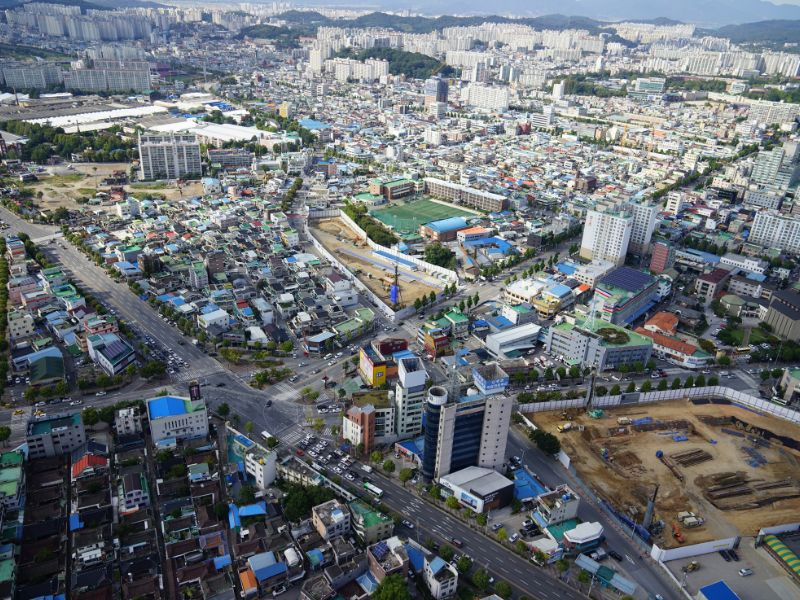
1. Visit the Gwangju National Museum
The Gwangju National Museum is dedicated to preserving and showcasing the traditional culture and history of the Jeolla region. It features a wide range of artifacts, from prehistoric times to the Joseon Dynasty, including ceramics, paintings, and sculptures. The museum also hosts special exhibitions and cultural events throughout the year. It’s a great place to learn about the rich cultural heritage of Gwangju and its surrounding areas.
- Historical Artifacts: Explore objects from prehistoric Korea to the Joseon Dynasty.
- Cultural Events: Attend special exhibitions and events throughout the year.
- Learning Opportunity: Discover the history of the Jeolla region.
Tip: Don’t miss the museum’s ceramic collection, which is one of the most extensive in Korea.
2. Explore Gwangju Biennale Exhibition Hall
The Gwangju Biennale is a contemporary art exhibition that takes place every two years, attracting artists and art lovers from around the world. The Biennale Exhibition Hall hosts this major event, showcasing a diverse range of contemporary art pieces, including installations, paintings, and multimedia works. It’s a must-visit for those interested in modern art trends and international cultural exchange. The venue also holds various art-related events, workshops, and lectures throughout the year.
- Contemporary Art: View cutting-edge installations, paintings, and multimedia art.
- Cultural Exchange: Learn about global and Korean art movements.
- Workshops and Lectures: Participate in creative discussions and workshops.
Tip: Visit during the Biennale year for a truly world-class art experience, but the exhibition hall is worth visiting year-round.
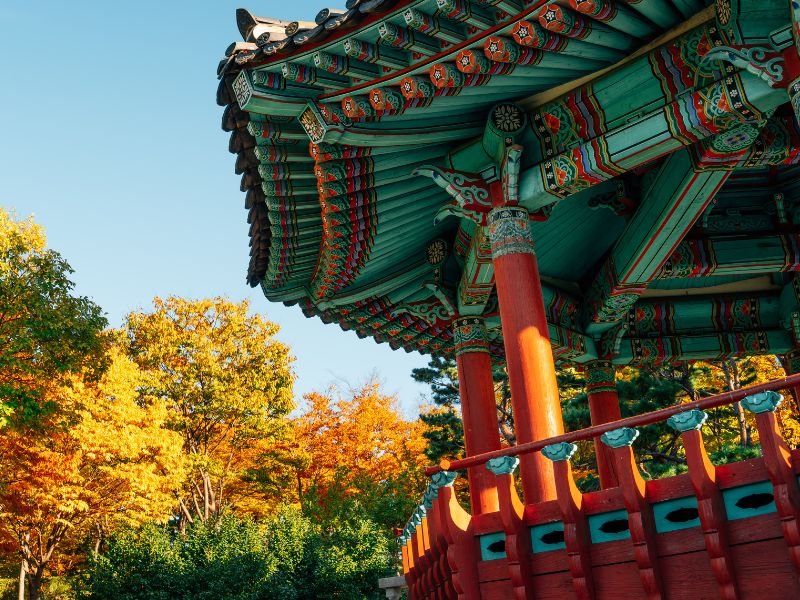
3. Wander Around 5.18 Memorial Park
5.18 Memorial Park is a poignant site commemorating the May 18 Democratic Uprising against the military government in 1980. The park contains memorials, sculptures, and exhibition halls that honor the victims and educate visitors about the event’s significance in South Korea’s struggle for democracy. It’s a place of reflection and learning, set within a peaceful green space. The park also hosts cultural and commemorative events, especially in May.
- Historical Significance: Learn about the democratic uprising of May 18, 1980.
- Memorials: Explore sculptures and monuments honoring the victims.
- Cultural Events: Attend special events held in commemoration each May.
Tip: Plan your visit during May 18 Memorial Week to witness special ceremonies and exhibitions.
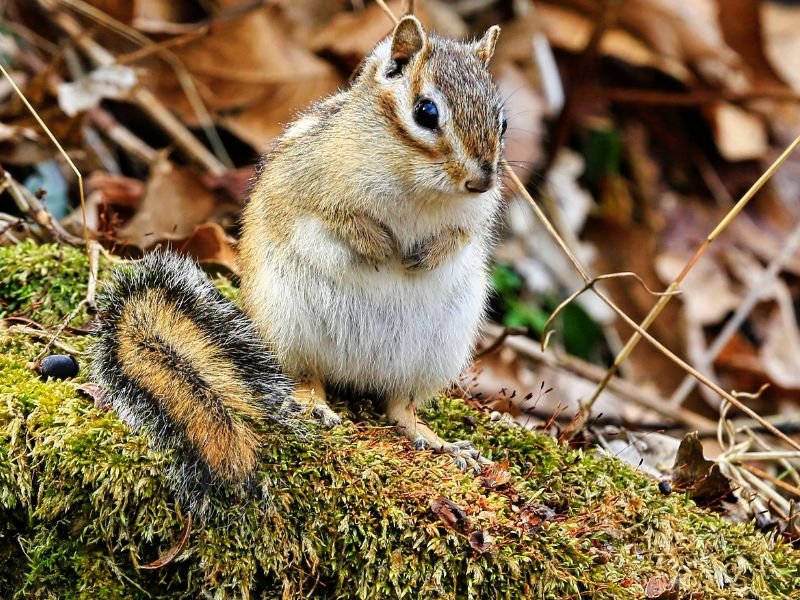
4. Enjoy the Scenery at Mudeungsan National Park
Mudeungsan National Park, known for its stunning mountain landscapes, is perfect for hiking and outdoor activities. The park offers trails of varying difficulty levels, leading to beautiful waterfalls, ancient temples, and scenic viewpoints. It’s a favorite among locals and tourists for picnics, mountain climbing, and exploring nature. The park’s highlights include the famous Jeungsimsa Temple and the peak of Mudeungsan Mountain, offering panoramic views of the city.
- Hiking Trails: Choose from beginner-friendly to challenging hikes.
- Natural Beauty: Enjoy waterfalls, temples, and forested landscapes.
- City Views: Reach the summit for breathtaking views of Gwangju.
Tip: Pack a picnic and relax at one of the park’s scenic spots after a hike.
5. Experience Traditional Korean Culture at Gwangju Folk Museum
The Gwangju Folk Museum provides insights into the traditional lifestyles, customs, and history of the Korean people in the Jeolla region. The museum features exhibits on traditional Korean houses, clothing, tools, and ceremonies, offering a glimpse into the daily lives of Koreans in the past. It’s an educational visit that allows guests to experience Korea’s rich folk heritage. The museum also organizes cultural experiences and craft workshops for visitors.
- Cultural Exhibits: See traditional Korean houses, clothing, and daily life artifacts.
- Hands-On Learning: Participate in cultural workshops and crafts.
- Historical Context: Understand the everyday life of ancient Koreans.
Tip: Check ahead for workshop schedules—they are a fun way to engage with Korean folk culture.
6. Discover Art at Gwangju Museum of Art
The Gwangju Museum of Art showcases contemporary Korean and international art, with a focus on works by local artists from Gwangju and the surrounding areas. The museum’s collections include paintings, sculptures, and multimedia art pieces. It serves as a cultural hub for the city, hosting various art exhibitions, workshops, and educational programs. The museum’s modern architecture and peaceful surroundings make it a pleasant place for art lovers to explore.
- Contemporary Art: Enjoy modern works by Korean and international artists.
- Educational Programs: Join art workshops and discussions.
- Peaceful Environment: Relax in the serene, art-filled spaces of the museum.
Tip: Make time for the outdoor sculptures surrounding the museum—they add an extra layer to the art experience.
7. Shop and Eat at Yangdong Market
Yangdong Market is Gwangju’s oldest traditional market, offering a vibrant atmosphere where visitors can shop for local produce, clothing, and handmade goods. The market is also famous for its food stalls, serving delicious Korean street food and traditional dishes. It’s an excellent place to experience the local culture, try authentic Korean flavors, and interact with friendly vendors. The market comes alive at night, making it a perfect spot for evening outings.
- Traditional Market: Experience Gwangju’s oldest and most lively market.
- Street Food: Try local delicacies like tteokbokki and kimbap.
- Night Atmosphere: Explore the bustling market after sunset.
Tip: Be adventurous with the food! Vendors often serve specialties unique to the Jeolla region.
8. Take a Leisurely Walk at Uchi Park
Uchi Park is a beautiful green oasis within Gwangju, offering walking paths, a serene lake, and various sports facilities. It’s a popular spot for locals to enjoy jogging, cycling, and family picnics. The park also features an outdoor amphitheater where concerts and cultural events are held. It’s a peaceful retreat, perfect for those looking to relax and unwind in nature away from the bustling city.
- Walking Paths: Enjoy a relaxing stroll around the park’s scenic routes.
- Outdoor Events: Attend concerts and cultural events at the amphitheater.
- Family-Friendly: Great for picnics and spending time with loved ones.
Tip: Visit during spring or autumn when the park is particularly stunning with blooming flowers or colorful foliage.
9. Visit the Gwangju World Cup Stadium
Built for the 2002 FIFA World Cup, the Gwangju World Cup Stadium is an architectural marvel and a must-see for sports enthusiasts. The stadium hosts not only football matches, but also concerts and major events throughout the year. Visitors can take a guided tour to learn about the stadium’s history, architecture, and significance in South Korea’s sports culture. The surrounding area is equipped with parks and recreational facilities, making it a great place for a leisurely visit.
- Sports Venue: Watch local football games or international matches.
- Stadium Tours: Learn about the architecture and history of this iconic structure.
- Recreational Area: Explore nearby parks and facilities.
Tip: Check ahead for match schedules or concerts—you might catch a major event during your visit.
10. Learn at the Gwangju Science Center
The Gwangju Science Center makes science fun and accessible for visitors of all ages. With interactive exhibits, a planetarium, and science shows, it’s an educational experience that engages and entertains. The center offers a variety of hands-on exhibits focused on technology, space, and the environment, making it especially popular with families. It’s an inspiring place to spark curiosity and learn about the world of science.
- Interactive Exhibits: Dive into hands-on learning experiences focused on science and technology.
- Planetarium: Discover the wonders of space with fascinating shows.
- Family-Friendly: Perfect for children and adults alike to explore and learn together.
Tip: Be sure to catch one of the live science shows—they’re both entertaining and informative.
11. Enjoy the Views from Sajik Tower
Perched on a hill, Sajik Tower offers sweeping panoramic views of Gwangju and its surroundings. It’s a popular spot for photography, especially at sunset, when the sky glows with vibrant colors over the city. Visitors can climb to the top of the tower for free and enjoy the scenic vistas. The surrounding park also makes for a nice place to take a peaceful walk or relax with a view of the city below.
- Panoramic Views: Take in breathtaking cityscapes from the tower’s observation deck.
- Photography Spot: Capture stunning sunset shots over Gwangju.
- Relaxing Park: Stroll through the park surrounding the tower for some quiet time.
Tip: Visit around dusk for the best light and fewer crowds at the observation deck.
12. Experience Nightlife at Chungjangno Street
Chungjangno Street is the bustling heart of Gwangju’s nightlife, shopping, and dining scene. Lined with trendy shops, cafes, restaurants, and bars, it’s a lively area where both locals and visitors come to enjoy a night out. Whether you’re in the mood for shopping, trying Korean street food, or hitting the bars and clubs, this vibrant street has something for everyone. The street really comes to life at night, with bright lights and lively crowds giving it a dynamic urban vibe.
- Nightlife Hub: Enjoy bars, clubs, and live music performances.
- Shopping: Explore trendy shops and boutiques for fashion finds and souvenirs.
- Street Food: Try delicious Korean street food from the many vendors.
Tip: Plan to visit Chungjangno in the evening to experience the full energy and excitement of the street after dark.
13. Relax at Pungam Reservoir
Located on the outskirts of Gwangju, Pungam Reservoir is a peaceful getaway offering beautiful surroundings for walking, cycling, and simply enjoying nature. The well-maintained paths around the reservoir are perfect for a morning jog or a relaxing evening stroll. It’s also a popular spot for picnics and family outings, with scenic views and quiet spots for relaxation. The reservoir is known for its art installations scattered around, blending nature with creative expression.
- Scenic Walks: Stroll or jog along the reservoir’s peaceful paths.
- Art and Nature: Enjoy art installations that enhance the natural beauty of the area.
- Picnic Spots: Pack a lunch and relax with family or friends by the water.
Tip: Visit during the Gwangju Lake Music Festival, when the area comes alive with performances and activities.
14. Admire the Gwangju Hyanggyo Confucian School
The Gwangju Hyanggyo Confucian School, dating back to the Joseon Dynasty, is a beautiful heritage site offering insight into traditional Confucian education and philosophy. The well-preserved architecture, tranquil courtyard, and peaceful surroundings make it a unique cultural attraction in Gwangju. The school was historically used to teach Confucianism, and today it serves as a cultural heritage site, providing educational exhibits on Confucian teachings and practices. It’s a serene spot for those interested in Korea’s ancient educational system.
- Historical Significance: Learn about Korea’s Confucian educational traditions.
- Serene Atmosphere: Relax in the peaceful surroundings of this historic site.
- Cultural Insight: Explore educational exhibits on Confucian teachings.
Tip: Visit early in the morning to enjoy the school’s tranquil atmosphere before it gets busier.
15. Explore the Kimdaejung Convention Center
Named after former South Korean President Kim Dae-jung, the Kimdaejung Convention Center is a modern facility that hosts international conferences, exhibitions, and cultural events. The center’s impressive architecture and public art installations make it a notable landmark in Gwangju. Visitors can explore the convention center during exhibitions or events, or simply admire its modern design. It’s also a symbol of Gwangju’s role as a hub for international exchange and cultural diplomacy.
- Cultural and Business Hub: Attend international conferences, cultural events, and exhibitions.
- Modern Architecture: Admire the sleek, contemporary design of the center.
- Art Installations: Discover public art pieces both inside and outside the center.
Tip: Check the event calendar ahead of time to see if there’s an exhibition or cultural festival happening during your visit.
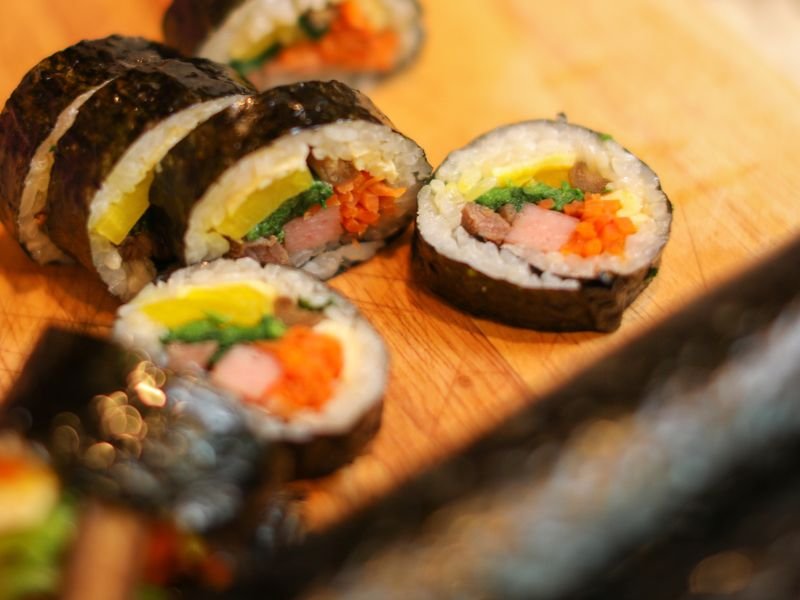
16. Taste Local Cuisine at Songjeong Market
Songjeong Market is a well-known spot for experiencing traditional Korean food and ingredients, making it an ideal destination for food lovers. Here, you can sample local specialties such as tteokbokki (spicy rice cakes), kimbap (Korean sushi rolls), and freshly made tofu. The market maintains a charming old-school vibe, with friendly vendors selling a variety of fresh produce and handmade goods. It’s a must-visit for an authentic taste of Gwangju’s culinary diversity.
- Local Dishes: Enjoy classic Korean street foods like tteokbokki and kimbap.
- Traditional Atmosphere: Experience the lively energy of a bustling, old-style Korean market.
- Fresh Ingredients: Find local produce and handmade food items straight from the vendors.
Tip: Bring cash, as many stalls may not accept credit cards, and go early to beat the crowds and grab the freshest food.
17. Walk Along the Gwangjuho Lake Eco Park
Gwangjuho Lake Eco Park surrounds a peaceful artificial lake, offering beautifully maintained paths for walking and cycling. It’s a fantastic location for picnics, leisurely strolls, and outdoor photography. The park is designed to protect the local ecosystem, and visitors can often spot various birds and wildlife. In addition to its natural beauty, the park features art installations and sculptures, blending nature and art into a serene, family-friendly environment.
- Scenic Views: Enjoy tranquil walks or cycle along the lakeside paths.
- Art and Nature: Discover unique art installations throughout the park.
- Wildlife Spotting: Keep an eye out for birds and other wildlife in their natural habitat.
Tip: Bring a camera for some beautiful shots, especially at sunrise or sunset when the lake’s reflections are stunning.
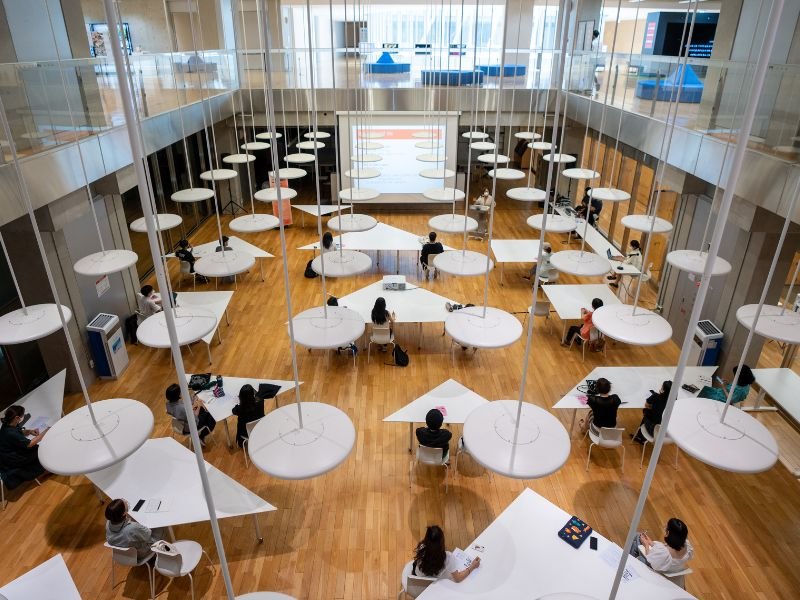
18. Visit the Asian Culture Center
The Asian Culture Center (ACC) is a cultural hub that promotes Asian arts and culture through a wide range of exhibitions, performances, and educational programs. The center includes galleries, theaters, and even libraries, offering everything from art exhibits to film festivals and interactive workshops. The ACC’s striking architecture is also worth noting, with open spaces and modern designs that symbolize Gwangju’s dedication to cultural exchange and creativity. The center is a place where art, history, and technology intersect, providing a space for both learning and enjoyment.
- Cultural Exhibitions: Explore art, performances, and educational programs from across Asia.
- Innovative Design: Admire the striking modern architecture of the center.
- Workshops and Festivals: Participate in cultural workshops or attend one of the many festivals.
Tip: Check the ACC’s event calendar online before visiting, as they frequently host special exhibitions and live performances.
19. Enjoy Water Sports at Wonhyo Reservoir
Located just outside of Gwangju, Wonhyo Reservoir is a scenic escape for those looking to enjoy water sports and outdoor activities. Visitors can rent kayaks, paddleboards, or boats to explore the calm waters and take in the lush natural surroundings. The reservoir is perfect for a quiet day out in nature, away from the bustling city, with the added bonus of plenty of spots for a picnic. The peaceful atmosphere and opportunities for adventure make it a popular destination for both locals and tourists.
- Water Sports: Try kayaking, paddleboarding, or boating on the serene reservoir.
- Outdoor Adventure: Enjoy hiking or picnicking in the picturesque surroundings.
- Relaxation: Escape the city and spend a day unwinding in nature.
Tip: Bring along snacks or a packed lunch, as there are great spots around the reservoir for a peaceful picnic.

20. Participate in the Gwangju Kimchi Festival
The Gwangju Kimchi Festival is an annual celebration of Korea’s most beloved dish, offering visitors a chance to immerse themselves in the world of kimchi making. The festival includes hands-on workshops, where participants can learn how to make traditional kimchi, as well as cooking competitions and tastings of various kimchi styles. It’s a fun, engaging way to connect with Korean culture, while also enjoying performances, traditional games, and food vendors. The festival is an exciting culinary and cultural experience for visitors of all ages.
- Kimchi Making Workshops: Learn how to make authentic kimchi in hands-on sessions.
- Cultural Performances: Enjoy traditional music and dance performances throughout the festival.
- Tastings and Competitions: Sample different varieties of kimchi and see top chefs in action.
Tip: Come with an appetite, as the festival offers plenty of opportunities to taste different styles of kimchi and other Korean dishes!
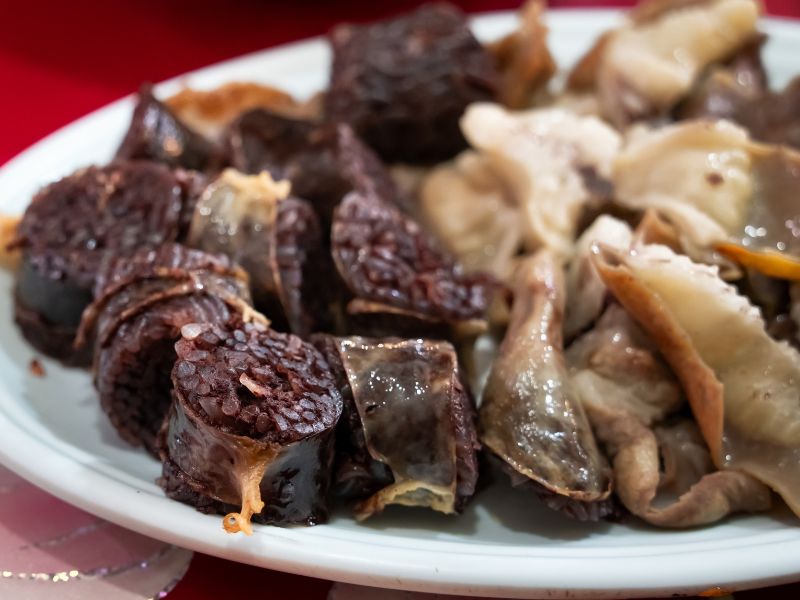
What To Eat and Drink at Restaurants in Gwangju, South Korea
Gwangju is a culinary haven with a vibrant food culture that reflects the rich agricultural heritage of the Jeolla province. Here’s a guide to some of the must-try foods and drinks in Gwangju.
1. Tteokgalbi (Grilled Short Rib Patties)
Tteokgalbi is a signature dish of Gwangju, and it’s a must-try for meat lovers. This savory dish consists of ground short ribs, often mixed with pork, seasoned to perfection, and then grilled over charcoal. The result is a juicy, flavorful patty with a slightly smoky taste. It’s often served with rice and kimchi, making for a hearty and satisfying meal.
- Local Favorite: Known as one of Gwangju’s specialty dishes.
- Savory and Smoky: Charcoal grilling adds a rich, smoky flavor to the tender patties.
- Hearty Meal: Typically served with rice, kimchi, and other side dishes.
Tip: Pair your tteokgalbi with a side of makgeolli, a traditional Korean rice wine, for a complete experience.
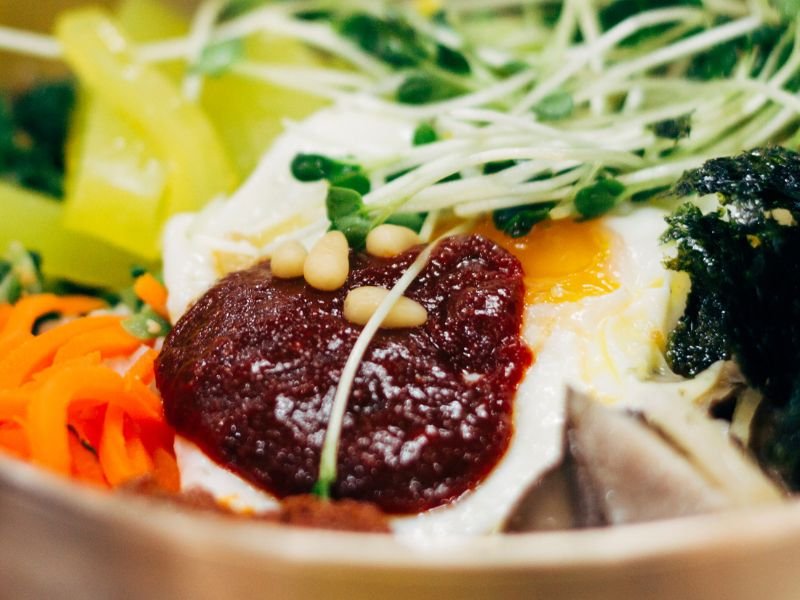
2. Bibimbap
Gwangju is famous for its Jeolla-style bibimbap, a colorful and nutritious dish that’s beloved across Korea. Made with rice, a variety of fresh vegetables, marinated meat, and topped with a fried egg, this dish is both visually stunning and incredibly delicious. What makes Gwangju’s bibimbap stand out is the use of locally sourced vegetables and the rich, flavorful gochujang (spicy red pepper paste) that ties everything together.
- Healthy and Flavorful: A nutritious mix of rice, veggies, and protein.
- Local Ingredients: The vegetables used are typically sourced from the surrounding region.
- Gochujang: The spicy red pepper paste gives the dish its signature kick.
Tip: For an authentic experience, try dolsot bibimbap, where the dish is served in a hot stone bowl that crisps up the rice at the bottom.
3. Kimchi
You can’t talk about food in Gwangju without mentioning kimchi. As the heartland of kimchi production, the city is known for its diverse styles of this iconic fermented dish. Whether you’re trying baechu (napa cabbage) kimchi, kkakdugi (radish) kimchi, or one of the many other varieties, you’ll quickly see why Gwangju is a kimchi-lover’s paradise. Kimchi accompanies almost every meal and varies in spiciness, tanginess, and texture depending on how it’s prepared.
- Iconic Dish: Kimchi is a staple in Korean cuisine and a cultural symbol.
- Diverse Varieties: From napa cabbage to radish kimchi, Gwangju offers it all.
- Rich in Flavor: The perfect balance of spicy, sour, and umami flavors.
Tip: Visit Songjeong Market to sample different kinds of kimchi and even take some home!
4. Gwangju-Style Tteokbokki
If you’re a fan of Korean street food, you’ll love Gwangju’s take on tteokbokki. This popular dish of stir-fried rice cakes is covered in a sweet and spicy red chili sauce. What sets Gwangju’s tteokbokki apart is its slightly sweeter sauce and chewy rice cakes that are absolutely addictive. It’s a crowd favorite at night markets and street food stalls.
- Street Food Classic: A must-try at Gwangju’s markets and food stalls.
- Sweet and Spicy: The perfect balance of heat and sweetness.
- Chewy Rice Cakes: Gwangju’s tteokbokki has a delightful texture that keeps you coming back for more.
Tip: Add boiled eggs or fish cakes to your tteokbokki for a more filling snack.
5. Jeolla-Style Jeon (Korean Pancakes)
Gwangju’s Jeon (savory pancakes) are another must-try dish when visiting. These crispy, pan-fried treats are typically made with ingredients like seafood, green onions, or mung beans, mixed into a flour and egg batter. Jeon is often enjoyed as anju, or food that pairs well with alcohol, especially makgeolli or soju. They’re golden, crispy on the outside, and perfectly tender on the inside.
- Crispy and Savory: Made with a mix of vegetables or seafood and fried to golden perfection.
- Perfect with Makgeolli: A traditional pairing with Korea’s favorite rice wine.
- Variety of Fillings: Seafood, green onions, and more can be found inside.
Tip: Order a pajeon (green onion pancake) at one of the many local makgeolli houses for an authentic Korean drinking experience.
6. Korean Fried Chicken (Chimaek)
Korean fried chicken, or chimaek (a combination of chicken and beer), is a favorite in Gwangju, and there are plenty of places to enjoy this indulgent treat. Unlike Western fried chicken, Korean fried chicken is known for its double-fried process, resulting in extra crispy skin. It’s typically coated in a spicy or sweet sauce, making it the perfect dish to enjoy with friends over a cold beer.
- Extra Crispy: Double-fried for a perfect crunch.
- Sweet and Spicy: Enjoy your chicken with a variety of sauces, from spicy to honey-glazed.
- Pair with Beer: Chimaek is a classic combo, especially at a casual hangout spot.
Tip: Try Yangnyeom chicken—a sweet and spicy marinated fried chicken that’s a hit with locals.
7. Gwangju’s Makgeolli and Soju
No food tour in Gwangju is complete without tasting some of Korea’s iconic alcoholic beverages—makgeolli and soju. Makgeolli is a traditional fermented rice wine that has a slightly sweet, tangy taste with a milky appearance. It pairs perfectly with dishes like jeon and tteokgalbi. Meanwhile, soju is a clear spirit that’s often enjoyed with grilled meats and Korean barbecue. In Gwangju, you’ll find various local breweries producing excellent versions of these drinks.
- Makgeolli: Tangy, slightly sweet, and perfect with savory dishes.
- Soju: Korea’s famous distilled spirit, often enjoyed with grilled foods.
- Local Brews: Look for makgeolli made from local Jeolla rice for a true Gwangju experience.
Tip: Order a traditional makgeolli set with a side of pajeon for the full Gwangju dining experience.
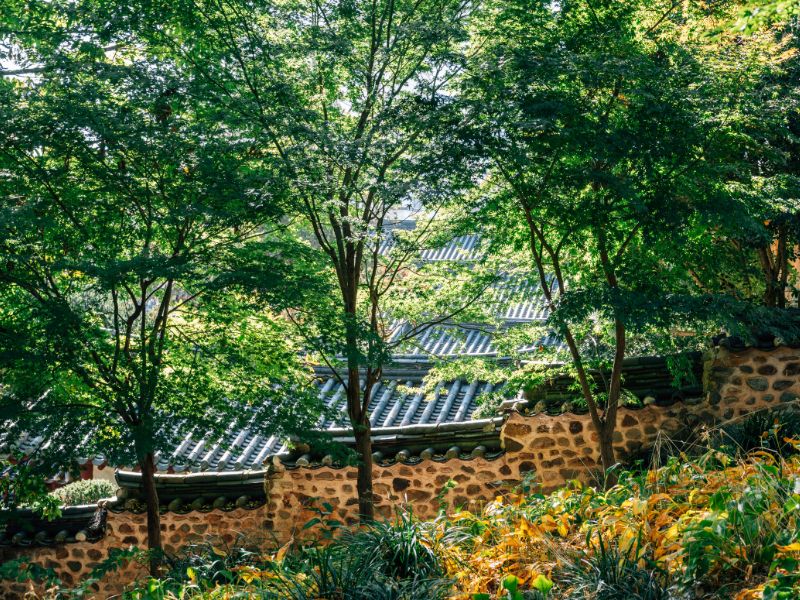
Tours For Visitors To Gwangju, South Korea
Let’s explore some of the top tours for visitors to Gwangju.
1. Gwangju Democracy and History Tour
For those interested in learning about South Korea’s struggle for democracy, the Gwangju Democracy and History Tour is an absolute must. This guided tour takes visitors through key sites related to the May 18 Democratic Uprising, including the 5.18 Memorial Park and May 18th National Cemetery. You’ll hear firsthand accounts of the events that shaped South Korea’s modern history, making this tour both moving and educational.
- Historical Significance: Learn about the 1980 uprising that played a pivotal role in South Korea’s democracy.
- Key Stops: Visit the 5.18 Memorial Park, May 18th National Cemetery, and the Democracy Uprising Museum.
- Guided Insight: Expert guides provide in-depth context about the historical and emotional importance of each site.
Tip: Wear comfortable shoes, as you’ll be walking through parks and memorial sites.
2. Mudeungsan National Park Hiking Tour
If you’re more of an outdoor enthusiast, the Mudeungsan National Park Hiking Tour offers the perfect escape into Gwangju’s stunning natural landscapes. A local guide will lead you through the park’s beautiful hiking trails, stopping at scenic viewpoints and historic sites such as the Jeungsimsa Temple. Whether you’re an experienced hiker or just looking to enjoy nature, this tour provides an excellent balance of physical activity and cultural immersion.
- Natural Beauty: Hike through lush forests and scenic mountains in Mudeungsan National Park.
- Cultural Stops: Visit Jeungsimsa Temple and learn about its historical significance.
- Tailored Routes: Choose between easy, moderate, or more challenging hikes depending on your fitness level.
Tip: Bring water, sunscreen, and a camera—there are plenty of photo-worthy spots along the way!
3. Gwangju Culinary Walking Tour
Foodies rejoice! The Gwangju Culinary Walking Tour is your chance to explore the best of the city’s traditional food markets and sample authentic dishes. Led by local experts, this tour takes you to places like Yangdong Market and Songjeong Market, where you can try street foods such as tteokgalbi, kimchi, and tteokbokki. Along the way, you’ll learn about the unique food culture of the Jeolla region, known for its emphasis on fresh ingredients and bold flavors.
- Local Flavors: Taste classic Korean dishes like bibimbap, tteokgalbi, and more.
- Market Visits: Explore Gwangju’s vibrant markets with a guide who knows all the hidden gems.
- Food History: Discover the cultural and historical significance of each dish.
Tip: Arrive with an empty stomach—you’ll be sampling a lot of delicious food throughout the tour!
4. Gwangju Art and Culture Tour
Gwangju is often referred to as the cultural capital of South Korea, and the Art and Culture Tour provides an in-depth look at the city’s thriving art scene. You’ll visit the Gwangju Biennale Exhibition Hall, which hosts one of the most prestigious contemporary art festivals in Asia, as well as the Gwangju Museum of Art and smaller, independent galleries. This tour offers a wonderful mix of both traditional and modern Korean art, making it perfect for art lovers.
- Artistic Exploration: Visit renowned art venues like the Gwangju Biennale and Museum of Art.
- Gallery Hopping: Discover local artists and contemporary works in smaller galleries.
- Cultural Exchange: Learn about Gwangju’s role in promoting international art and cultural dialogue.
Tip: Try to time your visit with the Gwangju Biennale, held every two years, for a truly world-class art experience.
5. Jeolla Food and Farm Experience Tour
Want to take your culinary adventure to the next level? The Jeolla Food and Farm Experience Tour lets you visit local farms around Gwangju to see where the region’s famous ingredients are grown. You’ll get hands-on experience with activities like picking fresh produce, making traditional Korean dishes, and even trying your hand at kimchi-making. It’s a truly immersive experience that highlights the farm-to-table culture of the Jeolla region.
- Farm Visits: Explore local farms and learn how Korea’s fresh produce is grown and harvested.
- Hands-On Cooking: Participate in making classic Korean dishes using fresh, local ingredients.
- Cultural Immersion: Experience traditional Korean farming life and food culture firsthand.
Tip: Dress casually and be prepared to get a little hands-on during the cooking and farming activities.
6. Gwangju Folk Village and Cultural Heritage Tour
Dive into Gwangju’s traditional past with the Folk Village and Cultural Heritage Tour, where you’ll explore historical sites that offer a glimpse into the region’s folk traditions. This tour typically includes visits to the Gwangju Folk Museum, where you can see exhibits on traditional homes, clothing, and tools used by Koreans in the past. You’ll also stop by local villages where artisans still practice traditional crafts like pottery and weaving.
- Cultural Immersion: Learn about the region’s folk traditions and historical way of life.
- Craft Demonstrations: Watch artisans at work, creating pottery and traditional crafts.
- Historical Insights: Visit sites that provide context for Korea’s ancient cultural practices.
Tip: Bring some cash if you’re interested in purchasing handmade crafts or souvenirs from local artisans.
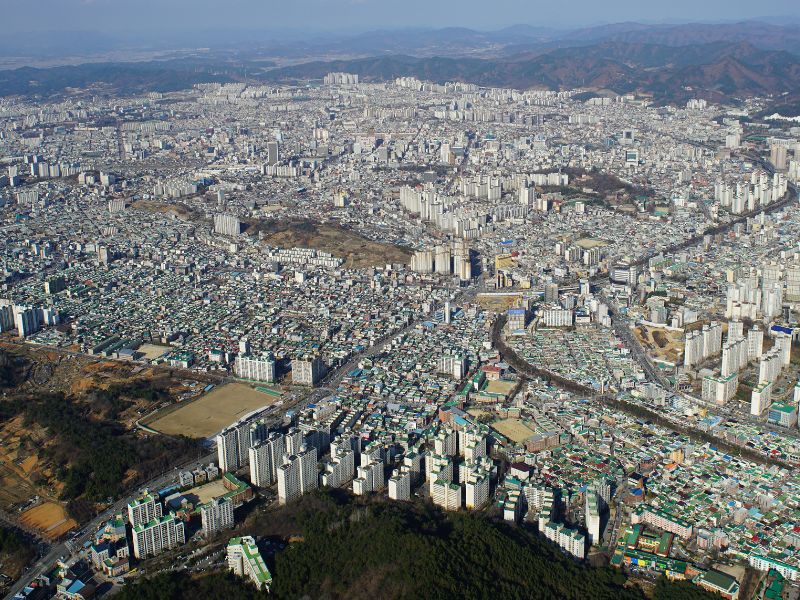
Gwangju Accommodations Guide: Hotels, Guesthouses and Hostels
Here’s a guide to help you find your perfect stay in this vibrant South Korean city.
1. Luxury Hotels in Gwangju
If you’re looking for top-tier comfort and service, Gwangju’s luxury hotels provide the perfect blend of elegance and convenience. From sleek, modern rooms to rooftop bars offering panoramic views of the city, these hotels cater to those seeking a higher level of hospitality. Many of these establishments also boast on-site restaurants, spas, and fitness centers to help you unwind after a day of sightseeing.
- Holiday Inn Gwangju: This upscale option offers contemporary rooms, an indoor pool, and excellent dining options, all in a central location.
- Ramada Plaza Gwangju: Enjoy a stylish stay with spacious rooms, a full-service spa, and proximity to cultural landmarks.
- Bentley Tourist Hotel: Known for its modern interiors and exceptional service, it’s a great choice for travelers who value both comfort and convenience.
Tip: For a special treat, book a room with a view of Mudeungsan Mountain—you’ll wake up to stunning scenery!
2. Mid-Range Hotels for Comfort and Value
For travelers seeking a balance between comfort and affordability, Gwangju has a variety of mid-range hotels that offer great value without compromising on amenities. These hotels often come with cozy rooms, free breakfast, and prime locations near the city’s best attractions. Ideal for families, solo travelers, and those on business trips, these properties provide a comfortable base to explore the city.
- Hotel Prado: A classic choice with clean, well-appointed rooms and easy access to public transportation.
- Hotel The May: Located close to 5.18 Memorial Park, this hotel offers spacious rooms and great service at an affordable price.
- Geumsoojang Tourist Hotel: With its retro charm and budget-friendly rates, this hotel is a hit among travelers looking for a unique stay.
Tip: Many mid-range hotels offer free breakfast, so be sure to check when booking to get a good start to your day.
3. Guesthouses for a Local Experience
For those wanting a more intimate experience, guesthouses are a fantastic option. These charming stays are often family-run and offer a more personalized touch. Many guesthouses are located in quieter areas, providing a peaceful retreat from the city buzz. You’ll also have the opportunity to interact with locals, learn about Korean culture, and even enjoy homemade breakfasts.
- Pedro’s House Gwangju: A popular guesthouse known for its friendly hosts, clean rooms, and communal atmosphere, perfect for solo travelers or small groups.
- Manhattan Guesthouse: Situated near Chungjangno Street, this guesthouse offers comfortable rooms with easy access to shopping and nightlife.
- Stay Hotel Guesthouse: This cozy guesthouse blends modern comforts with traditional Korean hospitality, providing a warm and welcoming environment.
Tip: Guesthouses often provide insider tips on where to eat and what to do in Gwangju—don’t hesitate to ask the owners for recommendations!
4. Budget-Friendly Hostels for Backpackers
Traveling on a budget? Gwangju has several affordable hostels that cater to backpackers, students, and budget-conscious travelers. These hostels offer clean, basic accommodations with shared facilities, often in a fun and sociable environment. You’ll meet fellow travelers from all over the world, making it a great option for solo travelers looking to make friends.
- Gwangju Backpackers: A simple, clean, and affordable option with dormitory-style rooms and a friendly atmosphere.
- Gwangju Guesthouse 145: This hostel offers private and shared rooms at budget-friendly rates, along with a communal kitchen and lounge.
- Sky Motel Gwangju: While technically a motel, this budget option is perfect for backpackers looking for a private room without breaking the bank.
Tip: Many hostels offer free Wi-Fi, lockers, and kitchen access, so you can save money by preparing your own meals.
5. Unique Boutique Hotels
For travelers looking for something a bit more unique, Gwangju has a selection of boutique hotels that blend creativity with comfort. These smaller, independently-run hotels often have themed rooms, artistic interiors, and a focus on offering a distinctive stay. Boutique hotels are perfect for those wanting to experience something different from the usual chain hotels.
- Hotel Yeogiuhtte: A stylish boutique hotel offering funky, modern rooms at a reasonable price.
- The Q Hotel: Located in the Buk-gu district, this hotel is known for its quirky decor and cozy ambiance.
- The Firenze Hotel: Combining modern design with Korean aesthetics, this hotel is a treat for those who love a visually appealing environment.
Tip: Boutique hotels often have unique themed rooms, so inquire if you want something truly special for your stay.
6. Traditional Hanok Stays
For a taste of Korea’s history and tradition, why not stay in a hanok, a traditional Korean house? These beautifully preserved homes offer a glimpse into Korean heritage, with features like ondol (heated floors) and sliding paper doors. While modern amenities are available, the overall experience is more about simplicity and connection with Korean culture.
- Jungnogwon Hanok Village: Experience traditional Korean living in this peaceful hanok village just outside of Gwangju.
- Geumnam-ro Hanok: Stay in a beautifully preserved hanok in the heart of the city, offering both modern comfort and historical charm.
- Hanok Guesthouse Gwangju: Nestled in a quiet area, this hanok stay offers serene surroundings and an authentic cultural experience.
Tip: Staying in a hanok is a great way to experience Korean hospitality and the unique architecture that has been passed down through generations.
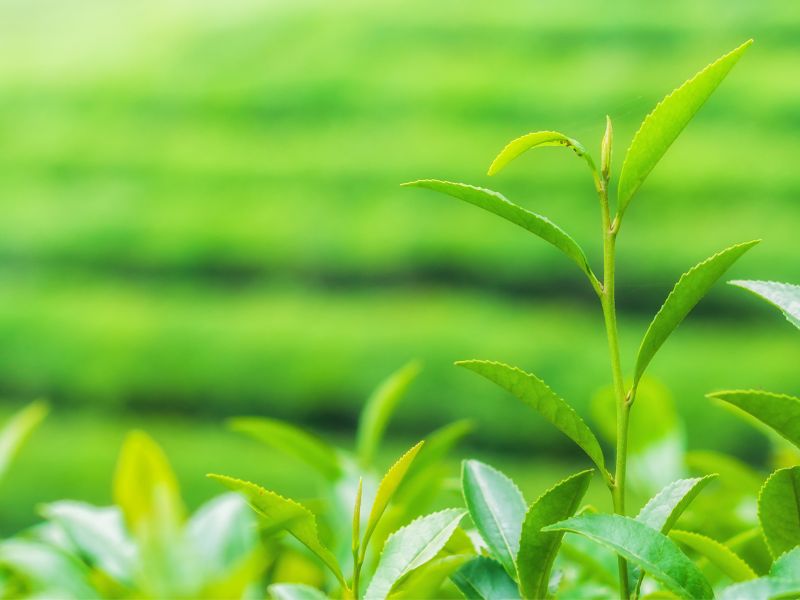
Day Trips From Gwangju, South Korea
Let’s dive into some of the best day trips from Gwangju that will add a whole new layer to your travel experience.
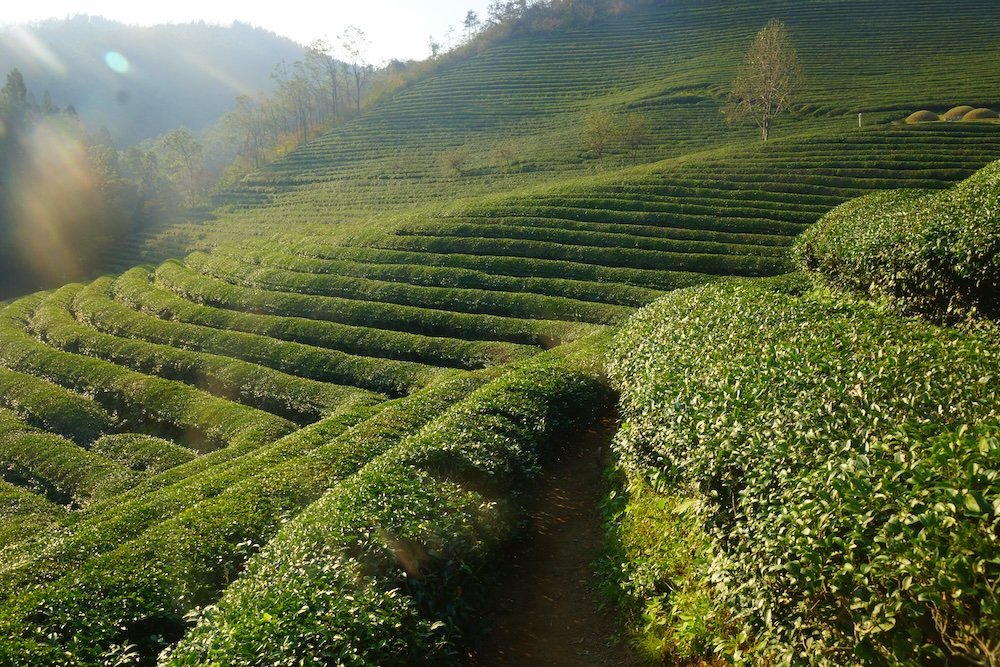
1. Boseong Green Tea Fields
Just a little over an hour’s drive from Gwangju, the Boseong Green Tea Fields are a must-see for anyone seeking tranquility and stunning landscapes. These rolling hills covered in bright green tea bushes provide a peaceful retreat and are a photographer’s dream. You can explore the tea fields, sip on fresh green tea, and even try your hand at picking the leaves yourself during the harvesting season.

- Scenic Beauty: Walk among the endless green tea fields with spectacular views.
- Tea Tasting: Sip on freshly brewed Boseong green tea at the local cafes.
- Cultural Experience: Learn about South Korea’s centuries-old tea cultivation practices.
source: Nomadic Samuel and That Backpacker via Samuel and Audrey YouTube Channel
Tip: Visit during spring or summer for the most vibrant scenery, or catch the Boseong Tea Festival held in May for a deeper cultural experience.

2. Damyang Bamboo Forest
A short 30-minute drive from Gwangju takes you to the serene Damyang Bamboo Forest (Juknokwon). This lush forest of towering bamboo creates a peaceful and cool atmosphere, perfect for an afternoon walk. The forest paths wind through thick bamboo groves, and there are several pavilions and rest areas where you can soak in the calm ambiance. The nearby town of Damyang is also famous for its bamboo-inspired dishes, so don’t leave without trying the local bamboo rice!
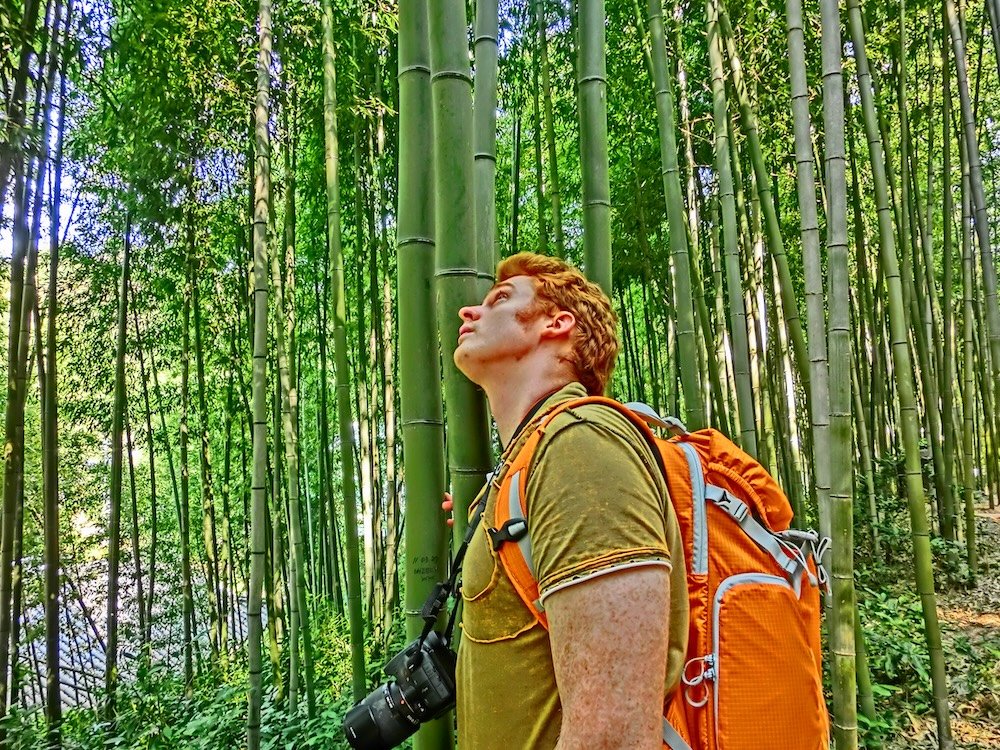
- Tranquil Walks: Wander through the peaceful bamboo-lined paths.
- Cultural Sights: Visit traditional pavilions nestled within the forest.
- Local Cuisine: Taste dishes made with bamboo, such as bamboo rice or bamboo tea.
source: Noamdic Samuel and That Backpacker on Samuel and Audrey YouTube channel
Tip: Arrive early in the morning to enjoy the forest in quiet solitude before the crowds arrive.
3. Suncheon Bay Wetland Reserve
For nature lovers, a visit to the Suncheon Bay Wetland Reserve is an ideal escape from the city. Located about an hour and a half from Gwangju, this expansive wetland is home to a variety of wildlife, particularly migratory birds. The winding wooden walkways that cut through the tall reeds offer beautiful views of the bay and the surrounding marshes. The Suncheon Bay Ecological Park also features an observatory, where you can get a panoramic view of the wetlands.
- Birdwatching: Spot migratory birds and other wildlife in the protected wetland.
- Scenic Walks: Enjoy peaceful walks along wooden boardwalks through towering reed fields.
- Eco-Park: Visit the observatory for stunning views of Suncheon Bay’s natural beauty.
Tip: Bring your binoculars for birdwatching, especially in the cooler months when the migratory birds flock to the wetlands.
4. Gochang Dolmen Site
Step back in time with a visit to the Gochang Dolmen Site, a UNESCO World Heritage Site located about an hour and a half from Gwangju. This ancient site features over 400 dolmens—large stone burial markers dating back to the Bronze Age. It’s one of the largest and most well-preserved dolmen sites in the world, offering a fascinating look at South Korea’s prehistoric culture.
- Ancient History: Explore one of the world’s largest collections of dolmens.
- UNESCO Heritage: Learn about the significance of these ancient burial sites.
- Cultural Insight: Gain a deeper understanding of Korea’s Bronze Age history.
Tip: The site is best explored with a guided tour, as it offers valuable historical context and stories behind the ancient dolmens.
5. Yeosu Coastal City
Just under two hours from Gwangju, Yeosu is a charming coastal city known for its scenic views, island-hopping tours, and fresh seafood. Take a relaxing boat ride around Odongdo Island, known for its beautiful camellia flowers, or visit Hyangiram Hermitage, a cliffside temple offering breathtaking views of the coast. Yeosu is also home to vibrant night markets, perfect for grabbing a seafood dinner as the sun sets over the horizon.
- Island Hopping: Explore nearby islands like Odongdo and Geomundo.
- Temple Views: Visit Hyangiram Hermitage for spectacular cliffside views.
- Seafood Delights: Enjoy the fresh seafood Yeosu is famous for at its bustling markets.
Tip: Try to time your visit with the Yeosu Night Sea Fountain Show, a mesmerizing evening spectacle along the waterfront.
6. Nagan Eupseong Folk Village
Travel back in time at the Nagan Eupseong Folk Village, a well-preserved Joseon-era fortress village located about an hour and a half from Gwangju. The village features traditional thatched-roof houses, historical buildings, and a fortress wall that you can walk along for scenic views of the surrounding countryside. It’s an excellent spot to experience traditional Korean life, with several cultural performances and craft demonstrations held regularly.
- Traditional Architecture: Explore a well-preserved Joseon-era village with traditional houses.
- Cultural Performances: Enjoy folk music, dance, and craft demonstrations.
- Scenic Fortress: Walk along the fortress walls for views of the village and surrounding fields.
Tip: Take part in a hanbok (traditional Korean clothing) experience for great photo opportunities as you stroll through the village.
7. Baegyangsa Temple
Nestled in the heart of Naejangsan National Park, Baegyangsa Temple is a peaceful Buddhist temple surrounded by stunning natural beauty. About an hour from Gwangju, the temple is particularly famous during the autumn months, when the nearby Naejangsan Mountain is blanketed in vibrant fall foliage. The serene temple grounds, tranquil ponds, and towering trees make it the perfect day trip for those seeking spiritual rejuvenation.
- Temple Tranquility: Experience the calm and beauty of a centuries-old Buddhist temple.
- Seasonal Beauty: Visit in the autumn to see Naejangsan’s famous fall foliage.
- Nature and Culture: Combine a visit to the temple with a hike in Naejangsan National Park.
Tip: If you’re looking for a truly immersive experience, consider participating in a temple stay, where you can spend a night at Baegyangsa and take part in meditation and traditional temple activities.
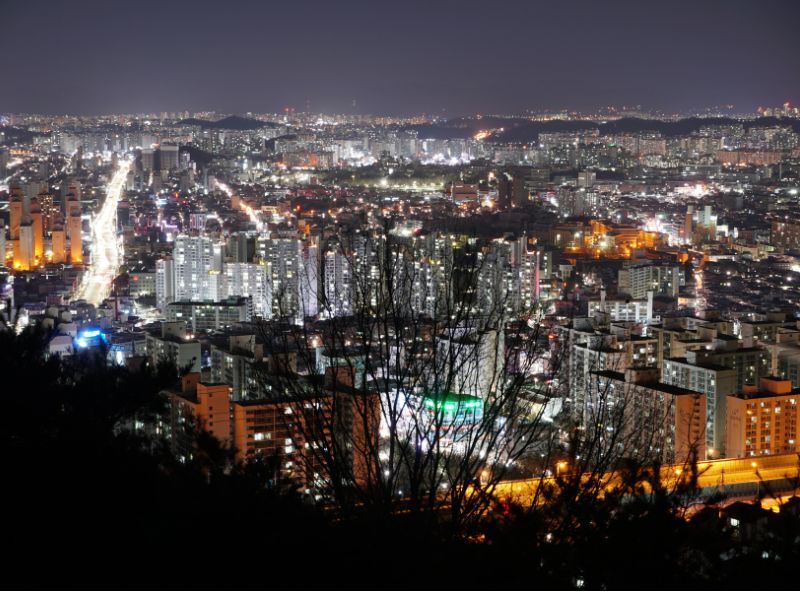
Gwangju Transportation Guide
Here’s a comprehensive travel guide to help you get around Gwangju with ease.
1. Gwangju Metro
The Gwangju Metro is the most convenient way to travel around the city, especially if you’re visiting major attractions like the Asia Culture Center or 5.18 Memorial Park. With a single metro line running from north to south, it covers most key areas of Gwangju. The metro is clean, efficient, and budget-friendly, with clear signs in both Korean and English, making it easy for non-Korean speakers to navigate.
- Single Line Convenience: Easy-to-follow metro line that connects major parts of the city.
- Affordable: A cost-effective way to travel, with fares starting as low as ₩1,250.
- User-Friendly: English signage and station announcements ensure stress-free travel for visitors.
Tip: Get yourself a T-money card—it’s a rechargeable transportation card that works on buses and the metro, and even in other cities across Korea.

2. Bus System in Gwangju
Gwangju’s bus system is extensive and reliable, offering one of the best ways to explore areas not covered by the metro, such as Mudeungsan National Park or the Boseong Green Tea Fields. With local buses that operate within the city and intercity buses connecting you to nearby towns, Gwangju’s bus network can get you just about anywhere. Buses are frequent, punctual, and generally equipped with Wi-Fi.
- Extensive Network: Covers both urban and rural areas, making it easy to reach destinations outside of central Gwangju.
- Affordable: Bus fares are similar to the metro, usually starting at ₩1,250, with free transfers between buses and metro within 30 minutes.
- Comfortable Rides: Buses are air-conditioned, clean, and equipped with Wi-Fi for your convenience.
Tip: Download a bus app like KakaoMap to check bus schedules and find the nearest stops in real-time.
3. Taxis in Gwangju
Taxis are a readily available and convenient way to travel if you’re short on time or need to get to more remote areas. Gwangju taxis are generally affordable compared to other major cities in Korea, and most drivers are friendly and helpful. While not all taxi drivers speak English, showing them the destination on your phone in Korean is a helpful way to avoid miscommunication. Many taxis also accept credit cards, making payment easy for international travelers.
- Affordable Fares: Starting at around ₩3,300 for the base fare, with reasonable rates for longer journeys.
- Easy to Find: Taxis are plentiful throughout the city, especially around major attractions and metro stations.
- Card-Friendly: Most taxis accept both cash and credit card payments.
Tip: Use the Kakao T app to hail taxis, check fares, and avoid language barriers when communicating with drivers.
4. Biking Around Gwangju
If you’re the active type or just want a leisurely way to explore the city, consider biking around Gwangju. The city offers a few bike rental services and has some scenic cycling routes, especially around Gwangju Stream and through parks like Uchi Park and Mudeungsan National Park. With designated bike lanes and peaceful paths, cycling is a great way to enjoy the city at your own pace.
- Scenic Routes: Enjoy the natural beauty of Gwangju while biking along riverbanks and through parks.
- Eco-Friendly: A sustainable and healthy way to get around while soaking in the local scenery.
- Bike Rentals: Affordable bike rental services available, with both hourly and daily rates.
Tip: Check out Gwangju Bike Sharing stations near major metro stations and parks for easy access to rental bikes.
source: That Backpacker and Nomadic Samuel via Samuel and Audrey on YouTube
5. Intercity Buses and Trains for Day Trips
If you’re planning to explore beyond Gwangju, such as visiting nearby spots like Damyang Bamboo Forest or Suncheon Bay Wetland Reserve, the city’s intercity buses and KTX (Korea Train Express) make travel seamless. Gwangju has two major bus terminals—Gwangju U-Square Terminal and Gwangju Songjeong Station—where you can catch both buses and trains to destinations across South Korea. The KTX offers high-speed rail options, connecting you to Seoul in under three hours.
- Intercity Buses: Affordable and frequent, with routes to nearby towns and major cities.
- KTX Trains: Fast and comfortable trains offering quick connections to Seoul and other regions.
- Easy Connections: Gwangju’s bus and train terminals are well-connected by the metro and city buses.
Tip: Book tickets for KTX trains online in advance, especially during peak travel seasons, to secure the best rates and avoid long waits.
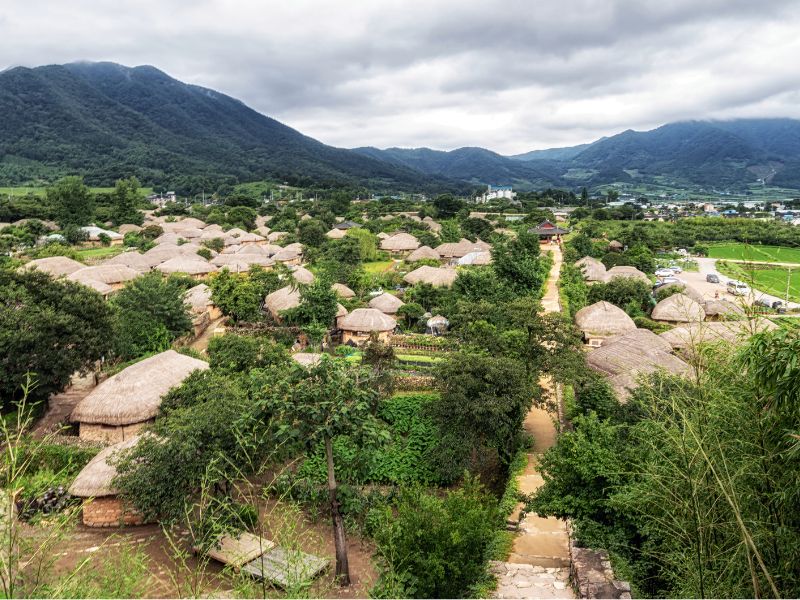
Where To Visit After Your Trip To Gwangju?
Here’s a list of destinations to consider for your journey beyond Gwangju, each offering a unique glimpse into the heart and soul of South Korea.
1. Jeonju
Experience the charm of traditional Korea in Jeonju, renowned for its Hanok Village, where over 800 traditional Korean houses line the streets. Savor the authentic flavors of Jeonju bibimbap, considered the best in the country. Explore the Jeonju Hanji Museum to learn about traditional Korean paper making. Don’t miss the vibrant atmosphere of the Nambu Night Market for delicious street food and local crafts.
2. Suncheon
Suncheon Bay Garden showcases eco-friendly design and stunning botanical displays, making it a must-visit for nature lovers. Explore the Suncheon Bay Wetland Reserve, a natural habitat for migratory birds and home to vast reed fields. Take a stroll in the historical Naganeupseong Folk Village, where residents still live in traditional Korean houses. End your day with a visit to Suncheon Open Film Set, where you can step onto the sets of famous Korean dramas and films.
3. Yeosu
Yeosu charms visitors with its beautiful coastal scenery and the impressive Expo 2012 site, now a park with futuristic architecture and ocean-themed pavilions. Ride the Yeosu Cable Car for breathtaking views of the coastline and islands. Visit the historic Jinnamgwan Hall, the largest single-story building from the Joseon Dynasty. Enjoy fresh seafood at the bustling Yeosu Fish Market, where you can select your meal and have it prepared on the spot.
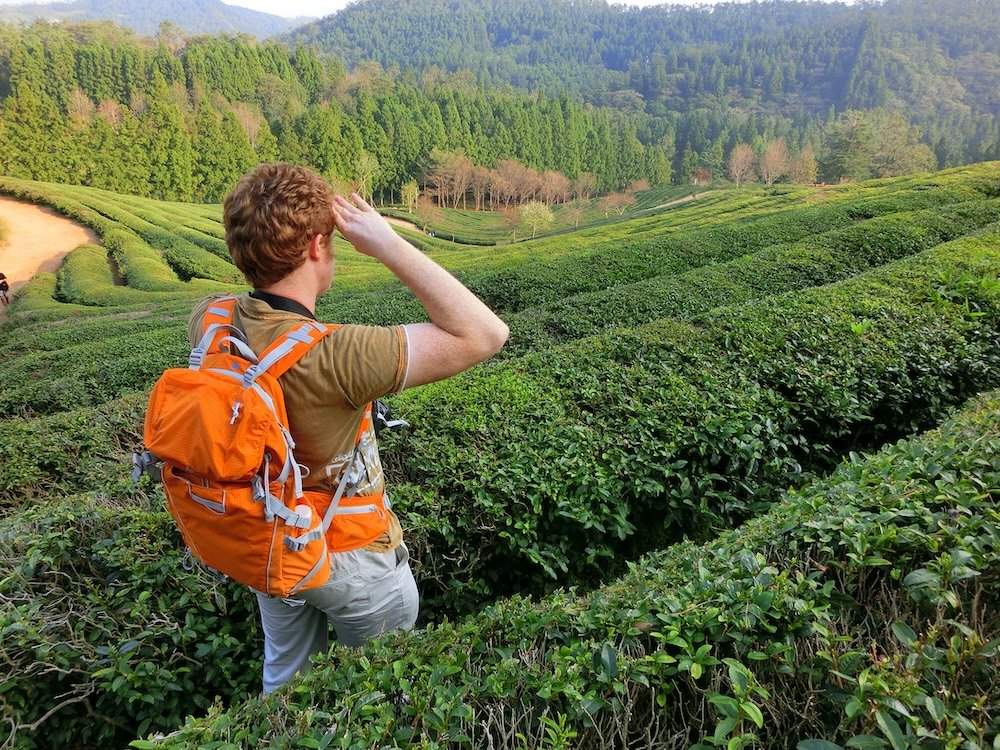
4. Boseong
Famous for its green tea fields, Boseong offers a picturesque landscape that’s both calming and invigorating. Walk through the lush, terraced tea fields of Daehan Dawon Tea Plantation and learn about tea production. Enjoy green tea ice cream and other tea-infused treats at local cafes. Visit the Yulpo Beach and Sea Water Pool to relax by the sea with views of the tea plantations.
5. Mokpo
Mokpo, a port city with a rich maritime history, serves as a gateway to the Dadohaehaesang National Park. Explore the Mokpo Modern History Museum to learn about the city’s past as a trade and migration port. Take a ferry to nearby islands for hiking and beach visits. Enjoy a panoramic view of the city and the West Sea from the top of Yudalsan Mountain.

6. Damyang
Damyang is renowned for its lush bamboo forests, particularly the Juknokwon Bamboo Garden, where you can enjoy the serene ambiance and cooler temperatures. Explore the traditional Korean houses and cultural exhibits at the Damyang Gasa Literature Collection. Taste local specialties like tteokgalbi (grilled rib patties) and bamboo shoot rice. Don’t miss the Damyang Slow City for a chance to experience a slower pace of life in harmony with nature.
7. Gochang
Visit the Gochang Dolmen Site, a UNESCO World Heritage site, where you can see prehistoric stone tombs scattered across the landscape. Enjoy the scenic beauty of Seonunsa Temple, nestled within Gochang’s lush forests. Explore Gochang Fortress for a glimpse into the region’s historical defenses. In spring, the Gochang Green Barley Field Festival offers stunning views of vast green fields and cultural performances.
8. Buyeo
Dive into the history of the Baekje Kingdom in Buyeo, an ancient capital with significant archaeological sites. Visit the Buyeo National Museum to see artifacts from the Baekje era and learn about this influential period in Korean history. Explore the Baekje Cultural Land to see reconstructions of ancient palaces, fortresses, and tombs. Don’t miss the Lotus Flower Festival at Gungnamji Pond, where the blooms create a breathtaking spectacle.
9. Jindo
Experience the natural wonder of the Jindo Sea Parting Festival, a unique phenomenon that occurs twice a year, allowing visitors to walk between islands on the exposed sea bed. Discover the rich musical heritage of Jindo through its traditional Korean folk music, particularly the Jindo Arirang. Meet the famous Jindo dogs, a beloved and loyal breed native to this island. Enjoy the pristine natural landscapes of Jindo, perfect for hiking and exploring traditional Korean villages.
10. Haeundae, Busan
Relax on the sands of Haeundae Beach, one of South Korea’s most famous beaches, known for its lively atmosphere and cultural festivals. Explore the nearby Dongbaekseom Island for scenic walks and views of the APEC House. Dive into the vibrant nightlife and culinary scene of Haeundae Market. Visit the SEA LIFE Busan Aquarium for an up-close look at marine life from Korea and beyond.
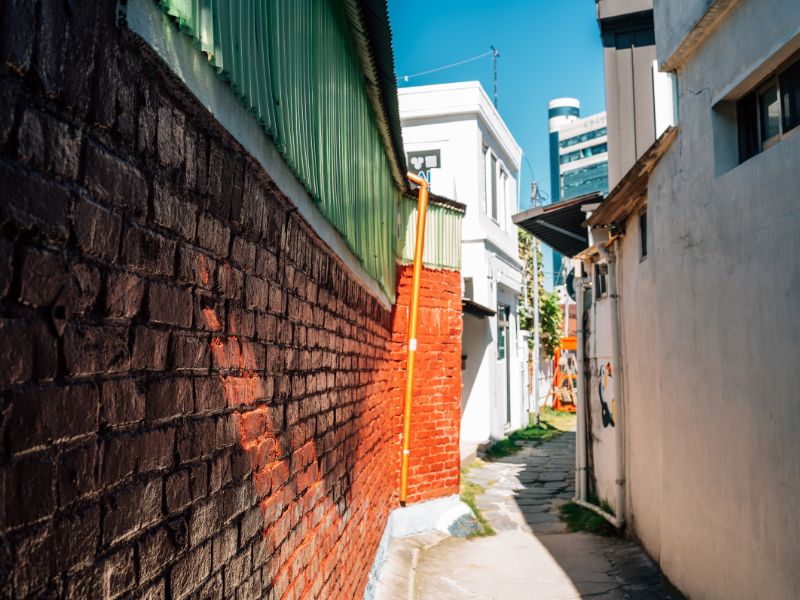
Gwangju Travel Questions Answered: Practical Tips, Local Advice & Trip-Planning FAQs
How many days do I really need in Gwangju to see the main sights and do a couple of day trips?
Honestly, three full days is the sweet spot if you want more than a rushed checklist. With two days you can cover central Gwangju highlights like the 5.18 Memorial sites, Asia Culture Center, Biennale area, markets, and Mudeungsan. A third full day lets you add at least one classic day trip such as Damyang Bamboo Forest or Boseong Green Tea Fields without feeling like you’re spending your whole visit on buses. If you’re a slow traveler, four to five days gives you time to mix city exploring, hiking, and two or three day trips at a relaxed pace.
Is Gwangju worth visiting if I’ve already been to Seoul and Busan?
Absolutely. Gwangju has a very different vibe from Seoul and Busan. It’s smaller, more laid-back, and strongly associated with democracy, activism, and contemporary art. You’ve got the May 18 history, a thriving food culture rooted in Jeolla province, and easy access to bamboo forests, tea fields, and wetlands. It feels more local and less polished-touristy, so if you’re curious about Korea beyond the big two cities, Gwangju adds a lot of depth to an itinerary.
What is the best time of year to visit Gwangju for weather and scenery?
Spring and autumn are the rock stars. From April to early June you get mild weather, flowers, and bright green landscapes without the worst of the humidity. Late September to early November brings crisp air and gorgeous autumn foliage in places like Mudeungsan, Damyang, and Baegyangsa. Summer (July–August) is hot, humid, and can be rainy, but it’s very lush and good for night markets and festivals. Winter can be chilly and grey, but if you don’t mind the cold you’ll enjoy quieter sights and lower accommodation prices.
Is Gwangju safe for solo travelers and at night?
Yes. Gwangju, like most of South Korea, is generally very safe, even at night. You’ll see students, families, and couples out late around Chungjangno, the university areas, and the markets. Usual common sense still applies: keep an eye on your belongings in busy places, avoid super drunk crowds in nightlife zones, and use licensed taxis or apps late at night. Violent crime against tourists is rare; the main “risks” are more along the lines of missing the last metro, getting lost in a maze of side streets, or drinking a bit too much soju.
How do I get to Gwangju from Seoul or Busan, and which option is easiest for a first-time visitor?
Easiest is to think in terms of “train if you want speed, bus if you want savings.” From Seoul, you can take the KTX high-speed train from Yongsan or Seoul Station to Gwangju-Songjeong Station in roughly 2–3 hours, then hop on the metro or a bus into the city center. From Busan, intercity or express buses are straightforward and frequent, usually taking about 3–4 hours. Tickets are simple to buy at stations or online, and signage is very foreigner-friendly. First-timers usually find KTX plus metro the least confusing, but buses are comfortable and very manageable if you’re on a tighter budget.
Do I need to rent a car to visit places like Damyang, Boseong, and Suncheon from Gwangju?
Nope. You can absolutely do the classic day trips without a car. Buses from Gwangju U-Square Terminal connect you to Damyang, Boseong, Suncheon, Yeosu, and other regional towns. From those bus terminals, local buses or short taxi rides get you to bamboo forests, tea fields, and wetland parks. A rental car does give you more flexibility for stringing multiple stops together in one day or reaching smaller villages, but it’s not essential. If you’re not comfortable driving in Korea, you’ll still see a lot using buses, trains, and the occasional taxi.
Which area is the best base in Gwangju for first-time visitors?
It depends. If you want the most central “city break” experience, staying near Geumnam-ro or Chungjangno puts you close to shops, restaurants, nightlife, and easy bus connections. If you’re more into arts and museums, the area around the Asia Culture Center and Biennale/Gwangju Museum of Art works well. Travelers who are zipping around by KTX and doing lots of day trips might prefer staying near Gwangju-Songjeong Station for quick airport and train access. The good news is that Gwangju isn’t massive-city overwhelming, so wherever you stay, you’ll still be able to get around fairly easily by bus and metro.
How budget-friendly is Gwangju compared to Seoul and Busan?
More forgiving. Accommodation, meals, and local transport in Gwangju generally cost less than in Seoul or Busan. You can find solid mid-range hotels at very reasonable rates, and food portions in Jeolla province are famously generous. Street food, market meals, and local eateries give you big spreads for modest prices. Attractions like parks, temples, and museums are often free or low-cost. Unless you’re going all-out on luxury hotels and high-end dining, Gwangju is an easy place to keep your daily budget under control.
What should I wear and pack for a trip to Gwangju, especially if I plan to hike?
Layers are your best friend. Bring a comfortable pair of walking shoes or lightweight hiking shoes for Mudeungsan, bamboo forests, and city exploration. In spring and autumn, a light jacket or fleece plus a breathable base layer works well because temperatures can swing between cool mornings and warm afternoons. In summer, opt for quick-dry clothing, a hat, sunglasses, sunscreen, and maybe a small towel or hand fan—it can be hot and sticky. In winter, think warm coat, gloves, and a beanie. Year-round, a small daypack, reusable water bottle, and compact umbrella are handy for sudden showers.
Is Gwangju a good destination for families with kids?
Yes. Families tend to do really well in Gwangju. The city has plenty of open spaces like Uchi Park, Gwangjuho Lake Eco Park, and Pungam Reservoir for running around, plus kid-pleasers like the Gwangju Science Center and gentle trails in Mudeungsan. Markets are fun for slightly older kids who like trying new foods and people-watching. Public transport is safe and straightforward, and it’s easy to mix “serious” sights like May 18 memorials with more playful stops like bamboo forests, lakes, and food markets to keep everyone happy.
What are the must-try foods in Gwangju that I shouldn’t skip?
Hungry? Gwangju sits in Jeolla province, which many Koreans quietly claim has the best food in the country. Don’t leave without trying tteokgalbi (grilled short rib patties), Jeolla-style bibimbap, various jeon (savory pancakes), seriously good kimchi, and Gwangju-style tteokbokki. Round things out with Korean fried chicken (chimaek), local makgeolli, and snacks from Yangdong and Songjeong markets. If you’re feeling adventurous, look out for regional specialties like sundae (Korean blood sausage) and seasonal side dishes you might not see elsewhere in Korea.
Are there any cultural norms or etiquette tips I should know before visiting Gwangju?
Yes. Most of the usual Korean etiquette applies here too: speak quietly on public transport, stand to the right on escalators when possible, and offer or receive items (like money or business cards) with both hands. In markets and casual restaurants, a friendly “annyeonghaseyo” when you walk in goes a long way. At memorials, temples, and cemeteries, dress modestly, keep your voice low, and avoid big group selfies right in front of altars or graves. If you’re invited to eat or drink with locals, it’s polite to pour drinks for others before refilling your own and to try at least a bite of what’s offered.
How accessible is Gwangju for travelers with limited mobility?
It’s mixed, but improving. Major modern sites like the Asia Culture Center, big museums, metro stations, and newer shopping areas usually have elevators, ramps, and accessible toilets. The metro itself is fairly user-friendly. However, older markets, side streets, and some traditional attractions can involve stairs, uneven pavements, or slopes without handrails. Mudeungsan and other natural areas have some gentle walking paths, but most of the classic viewpoints still require steps or steeper trails. If mobility is a concern, it’s worth choosing central accommodation near the metro, using taxis for hilly or awkward spots, and picking a few key nature areas with flatter paths or lakeside promenades rather than summit hikes.
Can I visit Gwangju’s democracy sites respectfully if I don’t know much about Korean history?
Absolutely. You don’t need to be an expert to visit respectfully. Start with a quick primer online about the May 18 Democratic Uprising so you understand the basics, then take your time at places like 5.18 Memorial Park and May 18th National Cemetery. Read the displays, move slowly through photo exhibitions, and keep conversations soft. Avoid loud phone calls, posing for goofy photos, or eating right beside memorials. If you approach these sites with curiosity and empathy, locals are usually very welcoming of visitors who want to understand what happened here.
Is nightlife in Gwangju intense, or can I enjoy a more laid-back evening scene?
You can easily do both. Around Chungjangno and the university areas you’ll find lively bars, cafes, karaoke rooms, and late-night eateries that go strong on weekends. But Gwangju also shines for slower evenings—think makgeolli and jeon at a cozy restaurant, a walk through lit-up streets, or a quiet drink near the Asia Culture Center. It’s very easy to have one “big” night out and then switch to chill evenings with good food and an early sleep before a hike or day trip.
Gwangju Travel Guide: Final Thoughts
A City of Culture and History
Gwangju stands as a cultural heart of South Korea, and it’s impossible to visit without being touched by its rich historical significance. The 5.18 Memorial Park and May 18th National Cemetery serve as solemn reminders of the sacrifices made during the Democratic Uprising, but they also inspire hope and resilience. Beyond the history, the Gwangju Biennale and the Asian Culture Center offer world-class contemporary art that continues to put Gwangju on the international map.
- Cultural Legacy: Explore the city’s deep connection to democracy and art.
- Historical Sites: Visit places that define South Korea’s modern history.
- Contemporary Art: Engage with art that speaks to both the local and global audience.
Nature and Adventure at Your Doorstep
If you’re someone who loves the great outdoors, Gwangju will not disappoint. From the majestic peaks of Mudeungsan Mountain to the peaceful bamboo groves in Damyang, nature is always within reach. The city’s parks, trails, and scenic spots provide plenty of opportunities for those seeking relaxation or adventure.
- Mudeungsan National Park: Enjoy hiking trails with spectacular views.
- Nearby Escapes: Take short trips to places like Boseong Green Tea Fields or Suncheon Bay for more natural beauty.
- Outdoor Activities: Embrace everything from hiking to picnicking in Gwangju’s green spaces.
The Culinary Scene
Food is a huge part of the Gwangju experience. The city is famous for its Jeolla-style cuisine, which emphasizes fresh, high-quality ingredients and rich flavors. Whether you’re tasting the city’s famous tteokgalbi (grilled short rib patties), exploring the street food stalls, or enjoying a traditional meal in a market, your taste buds are in for a treat. Don’t forget to wash it all down with some local makgeolli or soju!
- Local Specialties: Indulge in Gwangju’s signature dishes like tteokgalbi and Jeolla-style bibimbap.
- Street Food Heaven: Wander through markets like Songjeong or Yangdong for delicious eats.
- Drinks: Try traditional Korean beverages like makgeolli or soju with your meals.
We hope that you have a wonderful time in Gwangju and that this travel guide has helped you make the most of your trip. Safe travels!
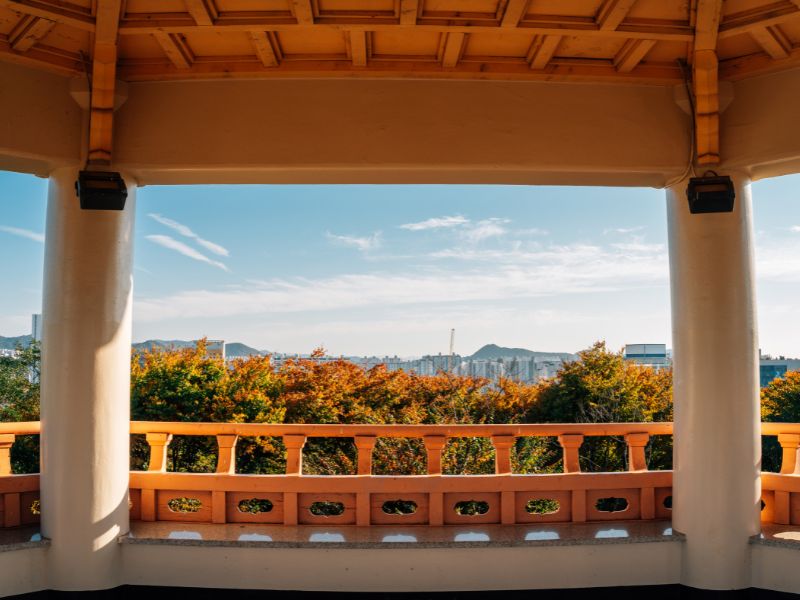
Ode To Gwangju
Gwangju, a city of culture and art, Where history and modernity entwine, A place where beauty and tradition start, And nature’s wonders always shine.
From the temples and museums in the city, To the lush green mountains and sparkling lakes, There’s something for everyone, it’s easy to see, And every step you take, a new adventure awaits.
The food and drink are simply divine, From street vendors to fine dining cuisine, You’ll taste the flavors of Gwangju’s rhyme, And savor each moment like a dream.
As day turns to night, the city comes alive, With music, dance, and art on every street, The nightlife here will keep you revived, And your soul with inspiration replete.
Gwangju, a city that captures the heart, Where memories are made that will forever last, So come and explore, let your journey start, And discover the magic of Gwangju at last.
